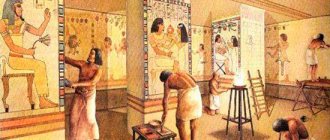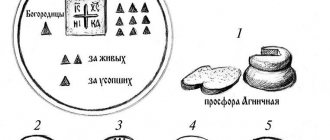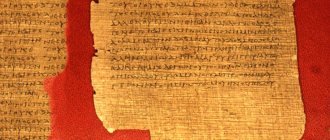Often, when reading a book or watching a movie, viewers are left dissatisfied with the ending. And to correct this unfortunate omission, they themselves take up the pen. In past centuries, only educated people who had enough money and time to not only write, but publish their creations could spend time writing sequels. However, today it is available to everyone with Internet access.
This type of amateur literature is called fan fiction. Let's learn about its features, and also consider such a related concept as canon.
What is fanfiction
Before finding the answer to the question: “What is the canon in fan fiction?”, it is worth studying this type of literature in more detail.
The term “fan fiction” comes from the English phrase fan fiction (fan fiction).
Despite its growing popularity, it is still not officially recognized in serious literary circles. It is considered the lot of irrepressible graphomaniacs, although this is not always a fair opinion.
By the way, fan fiction is amateur writings dedicated not only to books, films and television series, but also to comic books and video games.
Chronologically, they can be not only sequels, but also prequels, spin-offs, crossovers, reboots, etc.
Often their creators take the universe of the original work as a basis and come up with their own characters.
In addition to the name fanfic, this concept is also called FF, fanfiction, fanfiction, or simply fic.
In the modern world, there are numerous websites for FF authors where they can publish their works absolutely free, discuss them, and also read the works of colleagues. By the way, there is a special name for the authors of such literature - ficwriters.
Shipping
The word shipping comes from the English relationship. Shipping (shipping) is the same as shipping. The one who does shipping is called a shipper. The derived verb is to ship.
To ship means, being a fan of a series, film or book, to come up with romantic relationships for characters who, according to the plot, are not in love with each other. Often such couples are invented between same-sex characters, even if in the original they adhere to traditional sexual orientation.
Example: “I ship Mulder and Scali.”
Features and varieties
As sad as it is to realize, money still rules the world, although even with it you can’t buy everything. As for fan fiction, unlike ordinary original literature, this type most often does not bring profit to its creators.
The fact is that, due to the distinctive features of fan fiction, ficwriters use in their works plots and characters that are already an object in someone else's intellectual property. That is why making money from them is illegal and subject to prosecution.
Although there are lucky ficwriters who succeed. Thus, in 2001, a spin-off of the cult American novel Gone with the Wind was published. It was called The Wind Done Gone and was dedicated to Scarlett's fictional black sister Sinara.
Margaret Mitchell's heirs sued Alice Randall, who wrote the fan fiction. However, the writer had more clever lawyers, and the court decided the case in her favor. So the book was published, and brought its creator a good profit.
Another lucky guy is Seth Grahame-Smith. This author made a name for himself by writing fan fiction based on classic works of world literature, adding fantastic events to them.
Most of all, he went through Jane Austen, writing the FF “Pride and Prejudice and Zombies” and “Sense and Sensibility and Sea Monsters.” By the way, this type of fan fiction (mashup) is becoming increasingly popular today, since in this case you can bypass copyright law (due to the statute of limitations) and even publish your own works.
As for the types of fan fiction, there are a great many of them, and many fic writers even come up with their own. Therefore, it is pointless to list them; it is easier to mention the main categories:
- By the nature of the relationship.
- According to the method of creation.
- According to the plot.
- To size.
- According to the original.
- By age rating.
Canon - what does it mean in fan fiction?
Having considered the features of FF, we can move on to the main question. So, let's find out what canon in fan fiction is?
This term refers to the totality of all information about the fictional world of a certain original work, which its author (or copyright holder) considers correct.
In fact, a canon in fan fiction is an original book/film/game, the continuation of which is written by a ficwriter.
In practice, following the canon for ficwriters means that in their FF they use characters or events that are described in the original works. If new heroes are added to them or canonical characters behave differently than in the original, this is no longer canon.
It is worth remembering that it is not always unchanged. Especially when it comes to cinema. The fact is that when making a remake, the writers have to adapt the original plot to modern circumstances, and then the canon changes.
For example, this happened with the film epic “X-Men”. To justify the reboot, the writers forced Wolverine to change the past, and now the canon has changed.
Creepypasta {RUS}
Perhaps many were interested in the question of what is FANON and CANON? How are they different? And what is this anyway!
Well, today I’ll tell you what it is, “what it’s eaten with,” etc.
By the way, for those who don’t want to read this article for a long time, there is a short description at the bottom. And there are also some words that many people don’t know, so please don’t write in the comments “What is this word?”
For starters, what is canon? This is the totality of all the information provided to us by the original author. The author's universe, the appearance and character of the characters, the facts of their biography, directly indicated in the original work, be it a book, game, anime or film - all this is canon. Naturally, to write about the fandom, you need to be familiar with the canon. Well, yes, I think this is understandable. In the meantime, we will take a closer look at the concept of fanon. On the one hand, fanon is plot details that are true from the fans' point of view. This can be called established fanon. But in a broader sense, this concept can mean any speculation by fans regarding facts not disclosed in the original, and these can be either established stereotypes or the opinion of a specific person. But at the same time, fanon does not contradict canon—otherwise it would be OOC.
Let's look at some types and examples of fanon
Most often this happens with minor characters. Suppose the fans fell in love with a hero who was only featured on camera a few times or participated in one or two episodes. That is, the character, in general, is not revealed. Then the time for fanon comes, conjecture begins based on existing information, and character development begins. One wrote it, another picked it up, and you see, a stereotype has already formed. And then, reviewing the original, people are surprised: “How, why is this not said - this is a well-known fact!” As an example, we can take the same Mett from Death Note. This character is not much inferior in popularity to the main characters, although in both the manga and anime he was only featured a couple of times. But what scope for imagination - take the same relationship with Mello... These same relationships, so actively described by shippers, are fanon - many consider this almost a confirmed fact, and no counterarguments are given in the canon. Therefore, this could well have been in the original. So it's fanon.
Another option is when some additional facts about the characters appear that are not stated in the canon. This may refer to the character's background - let's say the original only mentions that the character grew up in a certain city. And what happened in his childhood, who he was friends with, what impressions influenced his character - such details are left to the discretion of the fans. Or another example - we have a character, and we don’t know whether he smokes or not. But at the same time, it seems to fit the image, and the author does not offer any statements about the fact that the character categorically cannot smoke. As a result, half of the fans will choose the option - smoke, half will not. And both sides may well be true. That is, in both cases it will be fanon. We just noticed another feature of fanon - it remains so until it contradicts the canon, but at the same time two fanons contradicting each other are quite possible for existence. This is often found in pairings. For example, Lelouch/SS and Lelouch/Karen have the same right to exist. And even if I prefer the first, I also cannot deny the possibility of the existence of the second. And we will talk about this in more detail in the next paragraph.
2) Relationships
The same relationships between the original characters. It doesn’t have to be pairings – it can be friendship, hatred, or sympathy. Regarding pairings, I think they can be roughly divided into three categories: canon, fanon, and selected at random or through the author’s sophisticated logic. It’s clear with the canon ones - these are those that are clearly stated in the original (Sobi / Ritsuka. Harry / Ginny as an example). Fanon ones are those that are not described, but at the same time have the right to exist. Sometimes you can even find hints of them. But still, for the most part, these are conjectures from fans, attempts to consider their relationship from different angles in the style of “What does he really feel for...?” As an option - “What is hidden behind their friendship/enmity/indifference, etc.?” Although, in fact, pairing is such a thing... there is a shipper for every shipper. And justify it accordingly, too. There are also pairings from the same “finger in the sky” category. Let me give you an example...hmm, well, on Hetalia - it will work out clearly. Something like Prussia/Canada/or Norway/Seychelles. Just find the extreme word, but at the same time you can do a very interesting thing. It depends on the creativity and talent of the author. The main thing in creating pairings of any kind is not to overdo it with OOC and convincingly, psychologically accurately show their right to exist. In the end, something has to unite the characters, draw their attention to each other. Or, on the contrary, are they complete opposites, which, as you know, attract? The main thing here is to use your imagination.
Fanon often appears in canon pairings - for example, the original does not say where the characters first met, how they confessed their love to each other, some facts about them remain unsaid. And here the omnipresent fanon comes to the rescue, fueled by the author’s imagination, which, as we know, is limitless. Something like a description of a date between Lilly and Jason (GP) is obvious fanon. After all, this could well have happened in the original. In general, there are many options here. So let's move on.
3) Missed episodes.
As they say, what is hidden. This includes the already mentioned facts of the hero’s biography. Using the Notebook as an example, we know that Mello, Matt, Near and Al grew up in Wammy's orphanage. But there are no details in the canon about how they ended up there, how they met, how their relationship developed. So fanons have the opportunity to come up with something themselves. But there may be another option - when fans, with the help of fanon, try to patch up some holes in the plot, complete a broken storyline, or predict the further development of the plot - if the original is not finished. This also includes scenes that are not shown in the canon, but fit well into the plot. There are plenty of such examples. Some episode from the past of Malfoy or Sirius, a romantic scene with the participation of Lilly and James (GP) - all this can be called elements of fanon, because, again, it does not contradict the canon. This is also popular in anime filled with fillers. Why not write a Naruto or Dee Gray fanfic about some mission that doesn't have much impact on the plot? Or describe Al's previous cases? In general, there are also a lot of opportunities here.
What other types of fanon can be divided into - well, for example, into already established, generally acceptable and individual - author's. That is, on the one hand, fanon, everyone has their own view of certain episodes, pairings, characters and other elements of the original work. On the other hand, there are fanon stereotypes that have wandered from fic to fic for so long and have become so ingrained that their own are almost an element of the canon. Although from the point of view of the original they will not always be confirmed and correct. As an example of such stereotypes, I will give a fragment from an article about the Harry Potter fandom. It seems to me that this fandom is one of the most public, so I try to give examples there, too, for clarity.
So, the quote “Let's take at least one of the largest fandoms - the world of Magical Britain, described in the seven books of J. K. Rowling. Anyone who has read any HP fanfiction knows that Dumbledore drinks tea with lemon drops. A sly squint through half-glasses, a phoenix on a perch, “Lemon drop, my boy?” – all of Albus Dumbledore in three phrases. But the notorious slices in Ptterian appeared only once (!) Once in the first book. From about the same area is the misconception that Snape is the godfather of Draco Malfoy. Someone came up with the idea, others followed suit. Sometimes fanon cliches eat into the subconscious so much that when rereading/revisiting the canon, the heroes begin to seem OOC, even if they don’t want to. Like in that joke about the fikraiter: “I should re-read the canon, otherwise I don’t even remember: Snape slept with Granger before or after he found out that Harry was his son.”
In general, that's all. In conclusion, I want to say - yes, fanon is a help for the ficwriter, but still it does not justify the canon. Therefore, if you are already writing about the fandom, take the trouble to refresh your memory in terms of the original - and then start speculating in order to avoid stupid mistakes. That's all. I hope it turned out interesting. After all, fanon is a relevant topic for fakriters. Thank you all very much for your attention, I look forward to your feedback and comments. And see you again.
A short description if you didn’t want to read the whole thing or just got to this point and have nothing better to do.
FANON:
Fanon is, in a broad sense, the collection of all unofficial fan works based on plots and characters from Toho. In a narrower sense - certain general ideas that were accepted by a wide number of fans, but originated in all unofficial creativity.
CANON:
Canon is materials and events accepted as "official" and "true" in a fictional universe, "the original work from which the fan fiction author borrows." Accordingly, “canonical” is the one that corresponds to the “canon”, “temporal”
and beyond doubt.
Another
Canon and fanon
Having learned the answer to the question, what is canon in fan fiction, it is worth considering such an important concept as fanon. This is the so-called fan canon. That is, a set of information about a fictional world that its fans consider correct, but it is not always true, according to the author.
Fanons are often attempts to explain away various plot holes or innuendoes. By the way, it happens that fanons can become canons.
For example, when the book “Harry Potter and the Half-Blood Prince” was published, in its finale Professor Snape kills Dumbledore and joins Voldemort.
However, fans of this character considered his act a clever intrigue to destroy the Dark Magician. This has become fanon for most of them. And when the next novel, Harry Potter and the Deathly Hallows, was published, this theory and this fanon became canon. Harry Potter fanfiction (dedicated to this topic) after that also became canonical.
In recent years, when working on sequels or prequels, screenwriters often use fanons established by ficwriters.
One of the most recent examples is the HBO television series Game of Thrones. As you know, George Martin (based on whose books this project is based) has released only 5 volumes so far. And, working on the script for the next seasons (6 and 7), the creators of the television project had to figure out how the plot would develop further. To make this task easier, the script used ideas from many fan fiction stories. Additionally, some fanon has been turned into series canon (while remaining fanon for George R. R. Martin's books).
So, despite the fact that official literary criticism and cinematography treats fan fiction and the fanons they create as a second-rate phenomenon, they do not hesitate to use their best developments for their own interests, and free of charge.
OTP
OTP is an abbreviation for the English Only True Pairing (“One and only possible pairing”). This is the name of the most popular pair of love characters in a work of fiction.
There are canonical pairs and invented ones. If the relationship between the characters takes place in the work itself, then this pairing is canon. For example, in the Harry Potter series of books, the relationship between Ron and Hermione is canon. But the relationship between Harry and Hermione, which many fans would like, is just shipping. But since this didn't happen in the original, fans made up the connection. Thus, OTP is the choice of every fan, his favorite fictional couple in the work.
In some cases, shippers' predictions come true. And by the end of the series, the characters really come together.
Naruto fanfiction
Having learned in more detail about fan fiction and their canons, it is worth considering practical examples of such works.
A few years ago, one of the most popular anime was Naruto, based on the manga of the same name. He talked about the adventures of the boy Naruto (who aspires to become a ninja) and his comrades: Sasuke Uchiha and the beautiful Sakura Haruno.
Although the story is more about friendship and struggle, it was the love part that excited many fans of the story. Therefore, many fans debated about Sakura's heart preferences. And since neither the manga nor the anime gave a clear answer to this question, it is still unknown today which pair is canonical: Naruto/Sakura or Sasuke/Sakura.
In any case, a lot of FF is devoted to each of the couples. The first of them is described in such works as “Any Place. And the bathhouse too...”, “A guy for rent”, “I believe in you”, “Love me through barriers”, “Prospects”, etc. It is worth noting that such writings often describe not only friendly or romantic, but also sexual relationships between Sakura and Naruto.
There are quite a few fanfictions based on the canon about Sakura and Sasuke. The most famous of them are: “A Dangerous Liaison”, “This strange thing is love!”, “I will teach you”, “Love, pain, hope”, “Cherry blossoms and the Dark Prince”, etc.
However, FFs based on this anime are not only dedicated to love relationships. Thus, among the most successful Russian-language works is the Naruto fanfic “Such a different canon...”. Its author is someone under the pseudonym Kozyr. His story is not focused on love relationships, but directly on adventures.
A Naruto fanfic, “Such a different canon...” is published on Fikbook (a popular Russian-language site where all the different ficwriters can post and discuss their creations).
What is this story about? About a stranger (a hero from another reality, dimension, time, etc.) from the human world into the universe of a Japanese mangaka.
At the moment, the fanfic “Such a different canon...” is not finished yet. As of January 13, 2021, 90 chapters out of the announced 91 have been written.
By the way, this FF was created based on the anime canon, not the manga. This story is not canon due to the presence of a new character who is not in either the anime or manga.
Origin
The beginnings of the phenomenon could first be observed among fans of the Star Trek series in the seventies of the last century. The first romantic fanfictions were dedicated to the homosexual couple Kirk/Spock and laid the foundation for an entire genre - “slash”. Subsequently, all couples were written through the “/” symbol, with the name of the character initiating the relationship at the beginning.
It is generally accepted that the term “shipper” was invented in 1996 by fans of the TV series “The X-Files”. Naturally, the OTP in this case was the Mulder/Scully couple.
It is also worth noting the huge contribution of anime to the development of this movement. For example, the innocuous manga and animated series “Pokemon” have spawned countless spikes between both human heroes and Pokemon themselves, and even Human/Pokemon pairings.
Thanks to fans of Chinese porn cartoons, a hybrid method of naming couples has come into use. In this case, instead of the “/” sign, a combination of names is used. For example, based on the Naruto/Hinata pair, a ship called “NaruHina” appears.
It is worth noting that you can ship not only fictional characters, but also ordinary people. For example, celebrities. By the way, the term “Brangelina” comes from shipper culture - it is based on the merger of the names of Brad Pitt and Angelina Jolie, the greatest love couple in the film industry.
Fan fiction based on "Tale of Fairy Tail"
Having learned a little about the fanfic “Such a different canon...” from Fikbook, it’s worth considering some other amateur work based on popular anime.
For example, based on the series “The Tale of Fairy Tail”, based on the manga of the same name. Unlike Naruto, at the center of its events are a whole group of main characters - these are wizards from the Fairy Tail guild. As is traditional in Japanese animation, most of them are not romantically involved.
At the moment, almost 53 thousand FFs are dedicated to “The Tale of Fairy Tail” on Fikbook (“Naruto” 58 thousand). As with the last one, most of them are about love.
Among the fan favorite couples are Natsu and Lucy (“The One Who Sees Ghosts”, “A Gift for Lucy”, “Fun School Life Before and After”), Jellal and Elsa (“The Right to Her Smile”, “I Can’t Enough of You, Really”) ”, “Bad Vacation”), Gray and Juvia (“You are nearby, and everything is fine!”, “Requiem for Common Sense”, “Time of Frostbitten Adventures”).
It's worth noting that the attempts to more actively develop romance among these characters are consistent with the canon of the anime, which has given more than explicit hints at the special relationship between the aforementioned couples.
Orthodox Life
The word “Canon” has acquired a huge number of meanings over the centuries-old history of its existence. In ancient Greece, it referred to a reed stick that builders used as a primitive ruler. Then they began to call the line itself that way. After some time, this term turned into a synonym for the concepts of “standard” and “sample”, that is, to be canonical means to be correct and correspond to certain clearly established norms. Moreover, in the Christian tradition, the rules governing most aspects of church life are called canons.
But there is another meaning contained in this word. The term “canon” denotes a genre of liturgical texts that is widespread in the liturgical practice of the Orthodox and some Uniate Churches. Usually we come across canons either when preparing for Communion, or at a funeral service, or in church when we attend evening services. And this concept is inextricably linked with Great Lent, during which the Great Penitential Canon of St. Andrew of Crete is read twice.
So what is canon anyway? How did he appear? Who was the author of the very idea of writing it? And what did Saint Andrew want to say in his brilliant creation? Let's try to figure it out.
If we compare any canon known to us with the rest of the liturgical heritage of the Church, it turns out that many liturgical texts will be much older. For example - psalms. Most of them appeared during the time of King David, and this is the 10th century BC. No less ancient are the so-called biblical songs, which are hymns offered to God by the prophets of the Old Testament. The oldest monuments of this group are more than three thousand years old. And even the Eucharist in its central part goes back to the Easter Jewish texts, which were formed even before the Babylonian captivity - that is, six centuries before the coming of Christ.
Compared to such venerable centenarians, the canons look very young, but in the course of the development of church worship, it was they who were destined to occupy a central place in many liturgical rites. For example, the canon is the semantic core of modern Matins, Compline and Midnight, not to mention prayer services and cell prayer rules. And all this is thanks to the works of St. Andrew, who in the 7th century was able to create a structure that most fully met the sacred needs of the believer.
The fact is that Christianity has, so to speak, two levels of religious life - the Old Testament and the New Testament. The first includes the rich traditions of the Israeli people, which were reverently accepted by the first Christians and reinterpreted in the spirit of the Gospel. The second level is the experience of grace that the Church acquired after the coming of Christ. But if Old Israel had a very vibrant culture, which gave rise to a huge variety of sacred texts, then New Israel needed for some time to look for unique forms of expression of its spiritual and mystical experience. And they were found.
One of them was troparia. The first mentions of them date back to the 2nd century. These are small chants, which during the service alternated with prayers and texts from the Holy Scriptures, conveying the essence of the New Testament event or church date celebrated on that day. The most ancient of the troparia that have reached us are “Quiet Light”, “Under Your Mercy”, “Christ has risen from the dead”. They have successfully survived all historical eras and have become one of the main elements of our services. Sedalen, ipakoi, luminary, kontakion, stichera, katavasia - all this is nothing more than troparia that have acquired one or another semantic coloring and function.
And so, having at his disposal such a form of prayer text as the troparion, Andrei of Crete made a small liturgical revolution. Before him, attempts had already been made to create a special genre of spiritual poems performed in churches during prayers. But this tradition did not take root, and the Old Testament texts (psalms, hymns) retained their leading positions for a long time. The saint took a different path: he did not invent something unusual, but used the familiar troparion, giving it a new sound. This was achieved very simply - the troparia, at the instigation of Andrei of Crete, gradually became autonomous elements not directly related to the Old Testament chants. Or rather, the connection remained, only now it was more semantic than technical.
As a result, a canon was born - a cycle of troparions united by a common theme. Since at first the tradition of performing Old Testament songs remained in force, the canons joined them. There are only ten songs. One of them - “My soul magnifies the Lord” - has an independent chorus, so the total number of hymns to which the canon’s troparia were added is nine. Centuries have passed, most of the hymns have ceased to be sung, but the troparia remain. As an echo of this turning point, the habit has come down to us of dividing canons into “songs” - in memory of the very songs of Holy Scripture to which the canon was attached in ancient times.
Now troparia can be combined into two, three, four, eight, and nine cantos. Each of them begins with an irmos - a small verse that repeats the main idea of the entire song. Usually the canon has eight parts - the second is of a Lenten nature, and is omitted outside the Lent period. As a rule, the songs are quite short - from two to four troparia for each. But there are also giant canons, which in each of their nine blocks contain ten, fifteen, and sometimes more than twenty troparia.
The largest is, of course, the Canon of St. Andrew. It is complete, it contains all nine songs, and in each of them there are up to thirty troparia. This is a truly monumental masterpiece, and its analysis will take more than one page. Therefore, we will dwell only on some of the most important points.
The first thing that catches your eye is the Canon’s appeal not only to God, but also to the person praying himself. Reading the penitential troparia, a person seems to be talking to himself, with his soul and conscience, analyzing his life and lamenting the mistakes he has made. The Cretan cycle is not just a cry. This is also an attempt to sober up your mind and set it in a repentant mood.
To do this, Saint Andrew uses a fairly common technique. He gives examples from the Holy Scriptures - examples of both great falls and great spiritual deeds. Examples of the depths to which a person can fall and the heights to which he can rise. Examples of how sin can enslave the soul and how the soul can gain victory over sin.
Particularly noteworthy is the fact that the author of the Canon uses a large number of symbols, which, on the one hand, are very poetic, and on the other, very accurately convey the essence of the problems being raised. For example, the word “wordless” appears frequently in the text. The modern reader associates it more with the inability or even the inability to speak, but in ancient times someone who was not involved in Christ was called dumb. God the Word, Logos - this is one of the names of the Son of God. Every thing on earth, sanctified by His grace, becomes “verbal,” participating in the Word, filled with true meaning. On the contrary, if someone or something is deprived of connection with the Lord, it turns into a “dumb” creature, which, as it moves away from its Creator, loses its original beauty and form.
By the way, such familiar expressions as “beauty”, “glory”, “decoration”, “kindness” - all of them are also filled with very deep content by Saint Andrew. These are not just some aesthetic concepts, but an entire moral system that fully corresponds to the theological heritage of Orthodoxy. And a person who reads the Canon does not necessarily have to have a seminary behind him in order to understand those simple things that the Cretan shepherd wants to convey to the heart...
St. Andrew builds a very simple and clear scheme: Man was originally created by God for joy and participation in His Divine existence. He clothed Adam and Eve in spiritual garments of grace, endowed them with various talents, and set before them the high goal of God-likeness. But a person, deceived by the devil, voluntarily chooses another path - the path of leaving God and creating a world within which there is simply no place for the Creator. Then, after some time, people begin to understand what their self-will has led to, but they are no longer able to change anything, since they have lost the grace-filled abilities that they were endowed with before the fall. And now, being in a fallen state, man cries out to his Creator: “I have clothed myself with the robe of shame, like the leaves of a fig tree, to expose my self-willed passions.”
The entire Great Canon is saturated with tears of repentance - genuine, unmasked, living. It is noteworthy that the very process of spiritual transformation of a person Andrei Kritsky thinks in categories very far from the concepts of “guilt”, “retribution” or “punishment”. The cry of the soul, brilliantly formulated by the author of the Canon, contains to a greater extent not the word “forgive”, but the words “heal”, “cleanse”, “correct”, because the Eastern tradition has always understood one terrible truth: No matter how much formal forgiveness, but without eliminating the sinful corruption of human nature, without eliminating that very “nakedness” and “ugliness” that St. Andrew speaks of, real salvation of a person is impossible. On the contrary, salvation is achieved not by simply fulfilling the commandments and mechanically doing good deeds, but by returning to God and putting on those very grace-filled clothes that were once lost by our first parents.
The Great Canon is read twice during Lent - in the first and fifth weeks. The first time he seems to remind us of what repentance actually is in the understanding of the holy fathers, and the second time - closer to Passion - believers are given the opportunity to compare: what they were going for, and what they were able to achieve in several weeks of prayerful feat . Has their repentance really become such a change in life, which entails a change in their way of thinking, behavior, and attitude? Repentance, according to the creator of the Canon, is not static self-contemplation and self-flagellation, but active doing, a journey in which only one direction is possible - forward and upward.
Unfortunately, in the modern rhythm, especially in large cities, a working person does not always have the opportunity to attend amazing services with the singing of the Canon of St. Andrew of Crete. But many people have the Internet, and finding this amazing text is not particularly difficult. Moreover, not only in the liturgical edition, but also in translation into ordinary literary languages. It is important for everyone who in one way or another connects themselves with the Christian tradition in general and with Orthodoxy in particular to read the Canon thoughtfully at least once in their life. He truly says amazing things.
The most important of them is the assertion that God is always nearby, and that the distance between Him and man is measured not by earthly concepts of “duty,” “sinfulness,” or “dignity,” but by simple love, faith and hope for the great mercy of the Creator. That same mercy that raises up the fallen, heals the sick, and cleanses sinners, returning them to their original beauty and greatness.
THOMAS
Fan fiction based on the epic "Harry Potter"
In addition to anime, FFs are often based on books. Thus, almost 62 thousand essays are devoted to the above-mentioned “Harry Potter” series on Fikbook, and the events of many of them are concentrated on minor characters, thanks to which they remain canonical.
For example, about the friendship of Sirius Black and Remus Lupin (Reciprocity) or the relationship between Lily Potter and Severus Snape (The Daughter of an Ordinary Potions Master). The latter, by the way, is non-canonical, since in the original book the professor does not have a daughter.
However, perhaps the most popular theme for Harry Potter fanfiction is the relationship between various canonical characters and the outsiders, in whom their authors, to a certain extent, see themselves. FFs of this kind, despite the presence of original characters, are non-canonical.
Supernatural fanfiction
Popular television series that have been running for years are another fertile topic for writing FF. For example, 35 thousand works are devoted to the project about brothers-hunters of evil spirits (Dean and Sam Winchester).
The lion's share of them are crossovers with other famous franchises. For example, with “Harry Potter” (“Lightbringers”), with the anime Hellsing (“Eternals”), with “Naruto” (“Demonesses”). And also, as paradoxical as it may sound, with the animated series “My Sweet Pony” (“Change the history of all universes”).
Needless to say that such works do not correspond either to the canon or even to fanon?
Fanfiction about “Poor Nastya”
It is important to note that the fertile imagination of Russian FF writers is focused not only on foreign creations, but also on Russian film products. Thus, 278 fan fictions are dedicated to the popular series “Poor Nastya”.
Most of them are about the adventures of Anna and Vladimir. They talk either about their childhood or about the future after the wedding (“Stone Trilogy”, “I Love ...”). Works of this kind are usually canonical and are sources for fanon.
In addition to the above, the indefatigable imagination of fans of the series has also created several non-canonical crossover fanfictions with projects such as “Don’t Be Born Beautiful” (“Irreplaceable”) and the book “Pride and Prejudice” (“Pride and Prejudice of Dvugorsky District”).








